Introduction to Lhasa:
As the capital of Tibet, Lhasa is the most developed city in the region, offering the best conditions for living, working, and traveling. It’s not just the economic and cultural center of Tibet; it’s also a world-renowned hub of Tibetan Buddhism.
Lhasa is both rich and welcoming. It retains its mysterious charm while quickly embracing the vibrant colors of outside cultures. You can take a quick look around or dive deep into its wonders. No matter where you come from or what you feel, the strong exotic vibe will hit you right in the heart. And then there’s the unforgettable blue sky with clouds that seem just within reach—who could possibly resist that?
Barkhor Street: This is the old town of Lhasa and a famous pilgrimage circuit. It’s also a hotspot for local delicacies and unique souvenirs.
Beijing East Road: This major thoroughfare runs east to west through Lhasa, with the iconic Potala Palace and Barkhor Street lining its edges. It’s a favorite gathering spot for backpackers.
Xianzudao Island: Located in the southern part of Lhasa along the Lhasa River, this island is famous for its numerous family-run guesthouses. It attracts many “Tibetan-style” travelers and is another popular area for tourists looking for accommodation.
Personal Impressions: Lhasa feels like another world on the rooftop of the world. This snowy plateau is home to a unique civilization, dreamlike natural scenery, and ancient cultural landscapes that are simply beyond description. For all devoted pilgrims, this is a sacred place. Temples, big and small, dot the landscape, with the sweet scent of Tibetan incense filling the air. The golden rooftops shimmer under the sun, and you can always spot devoted worshippers prostrating in the streets, reaching for the divine and finding their inner peace.
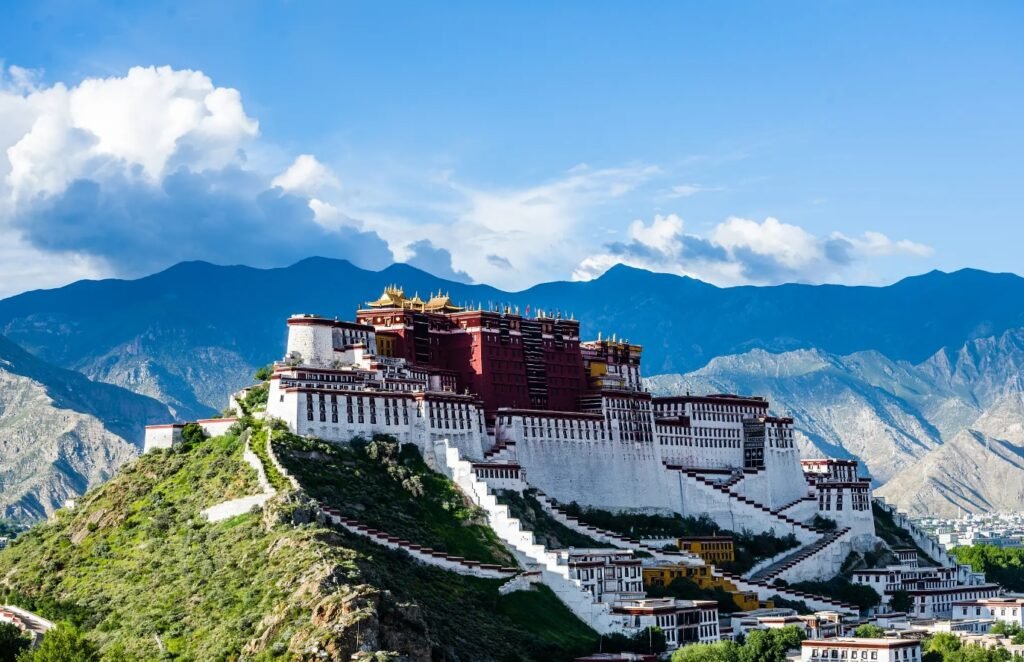
Best Time to Visit: The peak tourist season in Tibet runs from May to October, with July and August being the busiest months. Lhasa is no exception. However, the impact of seasons on travel in Lhasa isn’t too significant, so if you’re not too picky about temperatures, you can also consider visiting during the quieter months.
Clothing Guide: Summer in Lhasa can get quite warm, so you don’t need to pack too many clothes! However, if you plan to visit Namtso Lake or other nearby areas for an overnight stay, it’s a good idea to bring a fleece jacket or even a down jacket. Winter in Lhasa can be quite cold, so make sure to bring warm clothes like down jackets, scarves, gloves, and hats. Also, keep in mind that there’s a big temperature difference between day and night, so be sure to layer up appropriately.
Things to Keep in Mind Before Your Trip:
Altitude sickness (often referred to as “AMS”) is a common issue in high-altitude areas, and it can show up with symptoms like headaches, shortness of breath, chest tightness, loss of appetite, mild fever, dizziness, and fatigue.
Since Tibet is a high-altitude region, altitude sickness is a major concern for many travelers. But don’t worry—it’s not as scary as it sounds! The effects can vary from person to person, and there’s quite a bit of randomness to it. Usually, symptoms clear up in 1 to 2 days, but for those who are more sensitive, it can take 3 to 7 days to fully adjust. You really don’t need to overprepare before your trip; the most important thing is to maintain a positive mindset and ensure you get plenty of rest. However, if you have serious heart or lung issues or high blood pressure, it’s best to avoid high-altitude areas.
If you’re still worried, you can bring along some medications to help with altitude sickness:
- Jing Tian Hong Hua Capsules: Start taking these at least 7-10 days before your trip. They’re available online and are effective for altitude sickness.
- American Ginseng Lozenges or American Ginseng: Great for alleviating extreme fatigue.
- Nodicon Capsules: Also helpful for tackling fatigue.
- Bai Fu Ning: Good for managing headaches caused by altitude sickness.
When you first arrive in a high-altitude area, avoid rushing around, running, or engaging in strenuous activities.
Steer clear of overeating, drinking alcohol, or smoking. Focus on eating plenty of fruits and vegetables rich in vitamins, and make sure to drink water in moderation.
Keep warm and try to minimize showers (it’s best not to shower on your first night) to avoid getting a cold or exhausting yourself.
Don’t rush to use an oxygen bottle right away; doing so might make you dependent on it, making it harder for you to acclimate later.
If you can handle the taste, drinking more butter tea can also help ease altitude sickness.
If you experience symptoms like a cold, cough, or fever, make sure to take medicine and see a doctor promptly. If things get serious, it’s best to leave the high altitude as soon as possible, as untreated symptoms can lead to conditions like emphysema or even worse outcomes.
Lhasa has daily flights in and out, so you can easily catch a plane to leave. Usually, altitude sickness symptoms will disappear completely as soon as you board the plane or arrive at a lower altitude, with no lingering effects.
When taking close-up photos of locals, especially monks or women, always ask for their permission first to avoid any unnecessary trouble.
It’s a nice gesture to bring along some small gifts for those you’re photographing.
Many temples allow photography outside, but once you’re inside, taking photos is usually a no-go. Getting caught sneaking photos can lead to serious consequences.
Some places require payment for photography, so if that’s the case, make sure to follow the local rules.
Be cautious when photographing animals in tourist areas; you might end up being charged a hefty “photography fee.
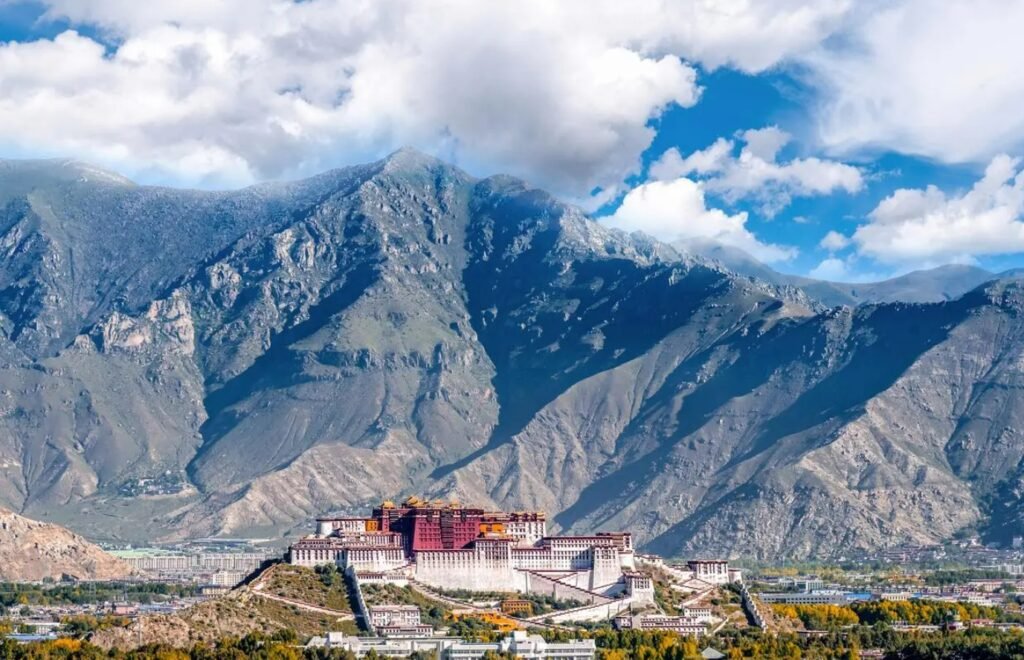
Customs
Influenced heavily by Tibetan Buddhism, every aspect of life for the Tibetan people reflects this spiritual heritage. When traveling in Tibet, it’s essential to respect local customs and traditions:
- Avoid discussing sensitive topics like politics and religion.
- It’s best not to call Tibetans by their names directly; adding “la” at the end of their names shows respect.
- Don’t touch the heads of Tibetans or pat them on the shoulders.
- Tibetans do not eat dog, monkey, horse, or donkey meat.
- When visiting a Tibetan home, if they offer you tea or alcohol and you really can’t drink it, politely decline.
- When receiving a khata (a ceremonial scarf), accept it with both hands. If they drape it around your neck, don’t take it off immediately.
- Following Tibetan Buddhist customs, always walk around temples, turn prayer wheels, and circumnavigate buildings in a clockwise direction.
- Never sit on stones that are engraved with scriptures or step over places where prayer flags are hung.
- When visiting temples, avoid pointing at Buddha statues, moving items inside the temple, making loud noises, and wearing sleeveless tops, shorts, or skirts.
- Take off hats and sunglasses before entering a prayer hall.
- You can offer a khata to the Buddha or donate coins (it’s a good idea to bring small bills like one or ten yuan).
Circumambulation (Turning Prayer Wheels)
According to Tibetan religious beliefs, making a complete circle around Jokhang Temple is called “turning prayer wheels” or “kora,” and it’s a way to pay homage to the statue of Shakyamuni Buddha housed inside the temple.
In Lhasa, there are three types of circumambulation based on the distance:
- Small Kora: This involves walking around the walls of Jokhang Temple and is called “Rekhor” in Tibetan.
- Medium Kora: This takes you around the rectangular Barkhor Street, referred to as “Pakhor” in Tibetan.
- Large Kora: This involves walking around the old city of Lhasa and is known as “Lingkhor” in Tibetan.
Generally, people start with the outermost route and gradually move inward towards Jokhang Temple. All three of these circumambulation paths center around the statue of Shakyamuni Buddha brought to Tibet by Princess Wencheng.
Other Notes:
While walking in the Tibetan region, you may often encounter children asking travelers for money or goods. It’s best not to give directly, as this can lead to being surrounded by even more children, making it difficult to move on.
Attraction Overview: Potala Palace
Altitude: Over 3,750 meters
The Potala Palace (often referred to as “the Palace”) is the highest and most magnificent palace in the world, standing as a vital symbol of Lhasa and Tibet. Originally built by King Songtsen Gampo of the Tubo Dynasty to welcome Princess Wencheng and Princess Chizun, it has been continuously expanded and renovated over the past 1,300 years, resulting in its current grandeur.
The palace is primarily divided into the Red Palace and the White Palace. The tallest structure, the Red Palace, is where important religious ceremonies are held, while the white buildings represent the White Palace. The red and white colors symbolize the integrated system of politics and religion that prevailed in the region at the time. At the foot of the palace, you’ll find a few yellow buildings as well.
The rich colors not only enhance the beauty of the Potala Palace but also carry deep meanings: red represents the rule over the three realms, white signifies tranquility, and yellow symbolizes longevity and endless blessings. There are also several ancillary buildings, including the Snow City at the base and the Norbulingka Park behind it.
Visitors to the Potala Palace must follow a fixed route marked by signs, essentially allowing for a linear exploration of the site. While the open halls may change frequently, the most important palaces are generally accessible every day.

Yaowang Mountain
Altitude: 3,725 meters
Located on the west side of the Potala Palace, Yaowang Mountain features a small path that leads to its summit. However, it’s most famous for the viewing platform situated halfway up the mountain, which is considered the best spot for capturing photos of the Potala Palace. Every morning, you’ll find a crowd of photography enthusiasts waiting to snap that first ray of sunlight hitting the palace. In fact, the design on the back of the current 50 yuan bill was taken from a photo shot from this very spot.
On the steep hillside of Yaowang Mountain’s eastern slope, there’s a uniquely shaped cave-like shrine known as Chalarup. If you plan to visit, be sure to bring a headlamp or flashlight!
Behind the mountain lies the famous Ten Thousand Buddha Wall, and there are several homes nearby that feature intricately carved mani stones. You can find this area by heading south along a small path located to the east of the Tibet Tourism Bureau.
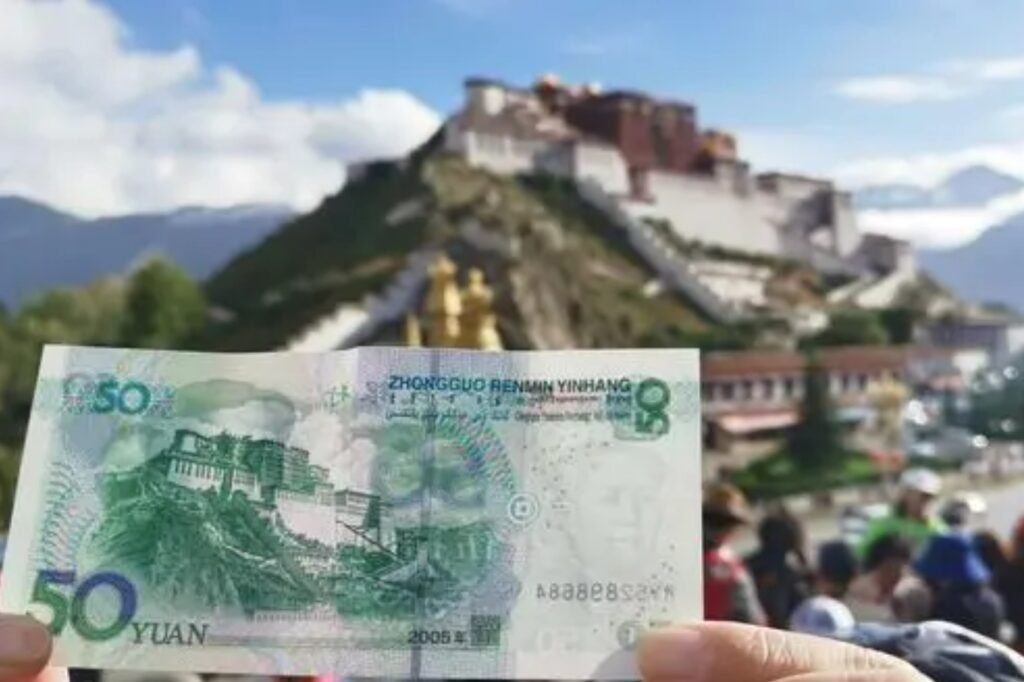
Barkhor Street
Altitude: 3,658 meters
Located in the old town, Barkhor Street, also known as “the Eight Corners Street,” is the most famous pilgrimage route and commercial hub in Lhasa. This popularity makes it one of the busiest places in the city every day. The well-preserved ancient cityscape and traditional way of life showcase authentic Tibetan charm—its streets are paved with hand-polished stones, and you’ll find old-style Tibetan houses lining the road.
Originally, Barkhor Street was just a circular path around Jokhang Temple, consisting of a polygonal route made up of East, West, South, and North streets, which the Tibetan people referred to as the “Holy Road.” Over time, it has gradually expanded to encompass a large area of old streets surrounding the temple.
You’ll always see local Tibetans on pilgrimage, and the street is filled with traditional shops. Most of the buildings along the street are stores selling a variety of Tibetan handicrafts, including jewelry, traditional robes, thangkas, prayer wheels, and other religious artifacts. You can also find products from India, Nepal, and Kashmir.
And of course, you can’t miss the delicious food! Many renowned restaurants in Lhasa are located here, like Magic Amie, Linxia Flavor King, and Guangming Port Sweet Tea House, where you can sample a wide range of Tibetan cuisine.
Additionally, the area around Barkhor Street is home to several religious and cultural sites, including Xia Mi Yuan, the Printing Institute, the ruins of Xi De Temple, Zang Gu Ni Nunnery, and a mosque, allowing you to fully experience the fascinating blend of different cultures.
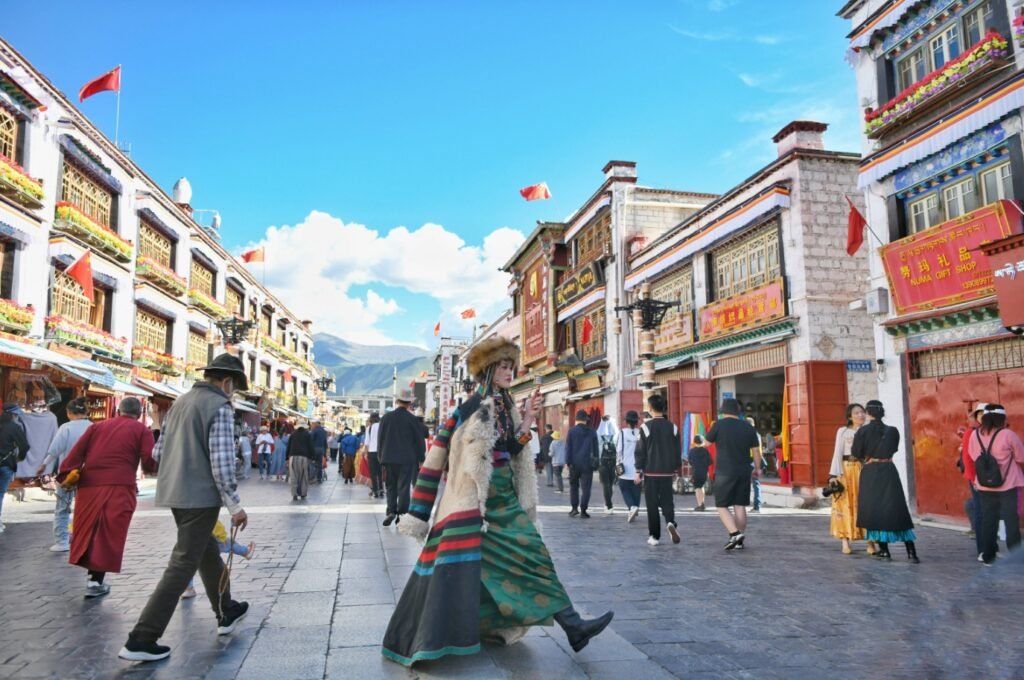
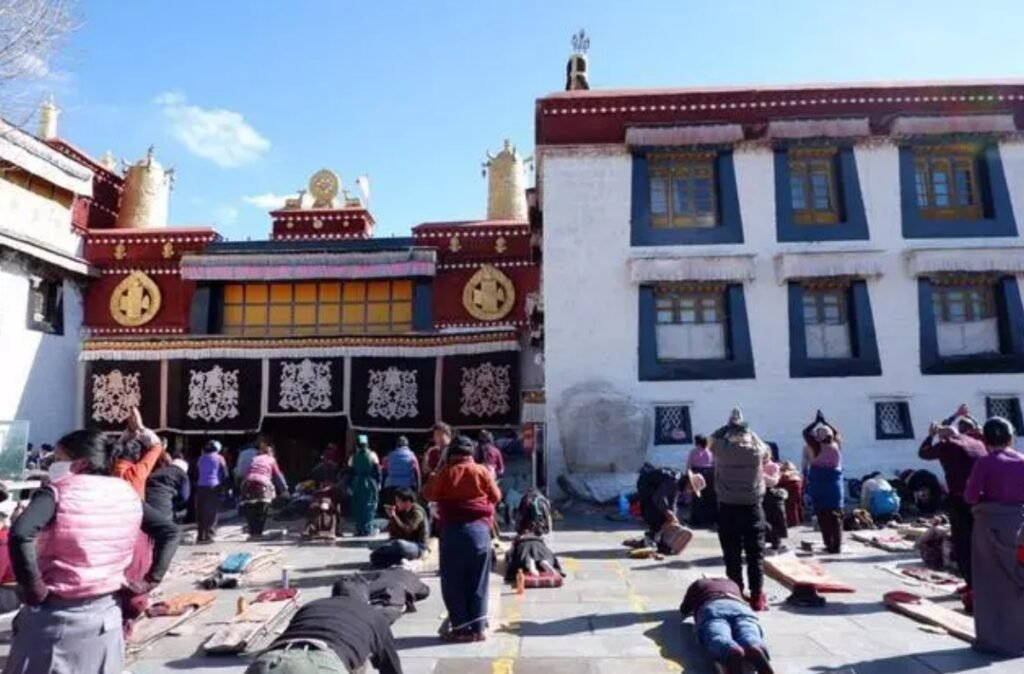
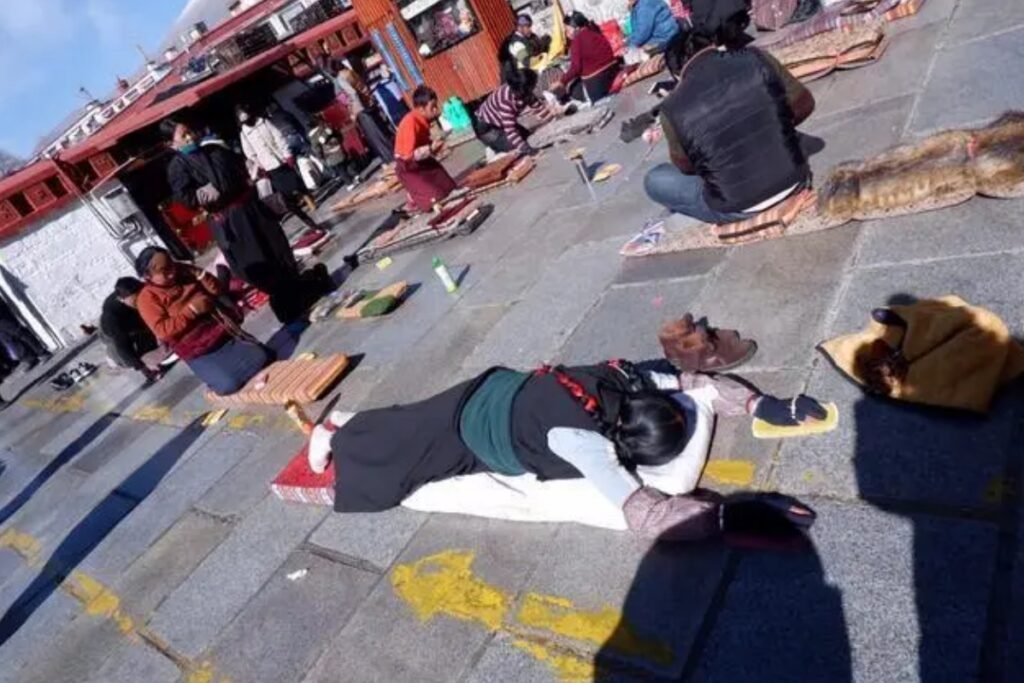
According to Tibetan Buddhist customs, when walking around Barkhor Street, you should go in a clockwise direction.
Don’t stay out too late in Barkhor Street; the alleys can be quite dark and confusing, making it easy to get lost.
You’ll often see pilgrims prostrating themselves along the street, some of whom may be as young as teenagers. These individuals usually come from thousands of kilometers away, making their way to Lhasa one prostration at a time. Not only is their journey incredibly long, but they also can’t take on odd jobs to earn money, so they endure a very tough life along the way for the sake of their pilgrimage. Even a small contribution can make a big difference for them. Near the entrance of Jokhang Temple, you might also find monks seeking donations for temple construction; feel free to help according to your means. However, keep in mind that some individuals may be taking advantage of tourists for donations. For example, there are skilled women who carry their children while begging; during their free time, they often gather in nearby alleys to share tips on how to ask for money.

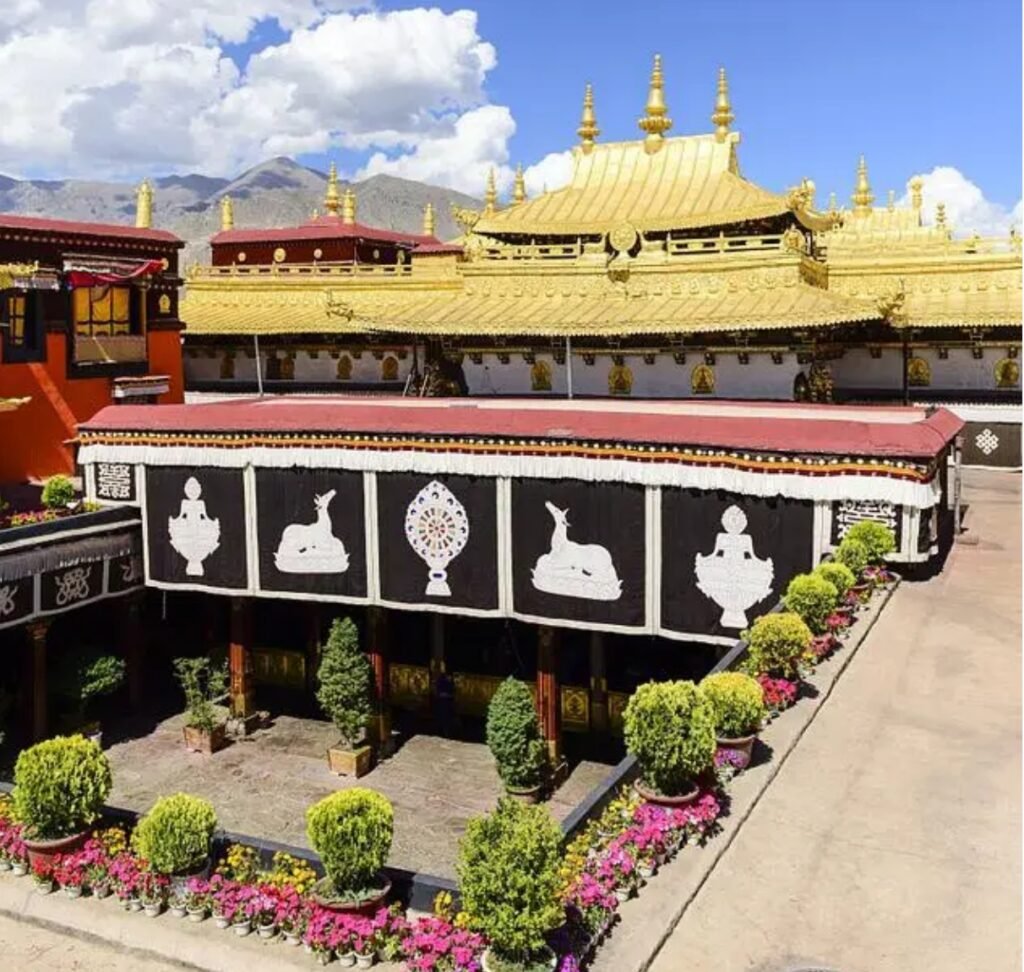
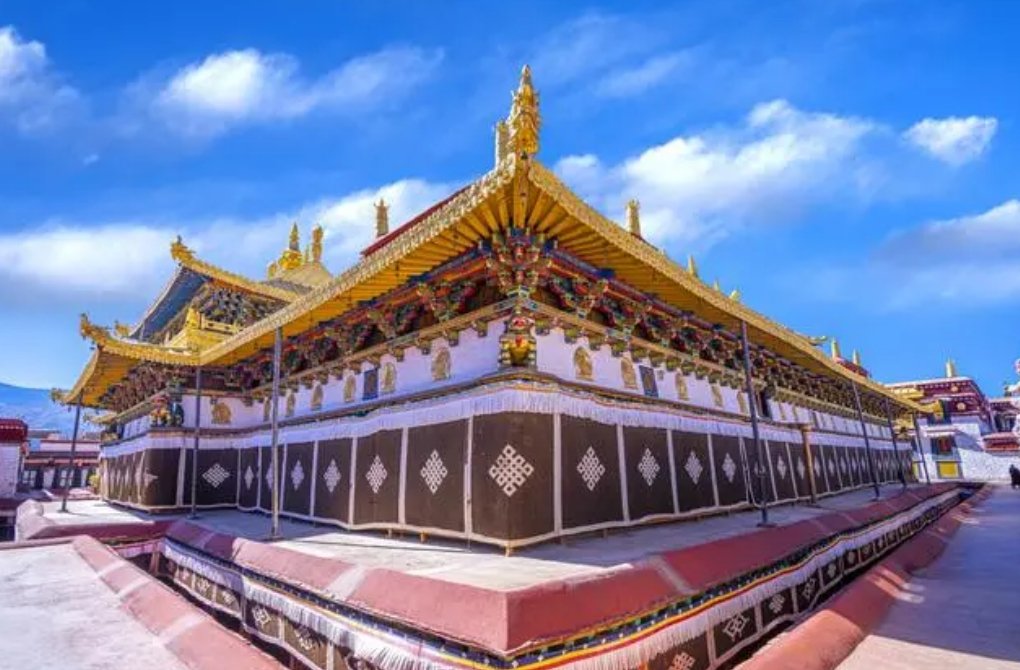
Jokhang Temple
Altitude: 3,658 meters
At the heart of Barkhor Street lies Jokhang Temple, which was built by Songtsen Gampo to commemorate Princess Wencheng’s arrival in Tibet. This Tibetan Buddhist monastery is the most magnificent surviving structure from the Tubo period in Tibet. The temple’s original name, “Rasa,” later became the name of the city and evolved into today’s “Lhasa.” Hence, it’s often said, “First came Jokhang Temple, then came Lhasa.”
Jokhang Temple holds an esteemed position in Tibetan religious culture, often referred to as the “Eye of Tibet.” It has always been the center for major Buddhist events, with a constant flow of pilgrims coming to prostrate and turn the prayer wheels every day.
The temple’s main attraction is the statue of a 12-year-old Shakyamuni Buddha that Princess Wencheng brought with her when she entered Tibet. This statue is one of the reasons Lhasa is considered a “sacred land.” As you enter the main hall, on the right side of the passageway, you’ll find a mural depicting the story of the temple’s construction. To truly understand Jokhang Temple, Lhasa in the 7th century, and the significance of Songtsen Gampo and Princess Wencheng, make sure to take a moment to appreciate this mural.

Drepung Monastery
Altitude: 3,800 meters
Drepung Monastery is not only the largest and most prestigious temple of the Gelug school of Tibetan Buddhism, but it’s also the biggest monastery in the world. The entire complex is massive, with rows of white buildings sprawling across the hillside, resembling a giant pile of rice from a distance, which is how it got its name, “Drepung.”
The monastery features numerous buildings, with notable ones including the “Ganden Podrang” and “Tsokchen Hall,” as well as the four major “Zachang” and their affiliated villages. It’s also worth mentioning that beside Tsokchen Hall is the largest kitchen in Tibet, which once served meals and tea to over 10,000 monks during its peak.
When visiting Drepung Monastery, you absolutely can’t miss the grand debate sessions held every afternoon. Typically, the debates feature two monks—one sitting and the other standing—who use exaggerated gestures to argue over scripture, creating a lively and entertaining scene. There’s also a type of debate called “Zhi Zong,” where multiple lamas question a single individual.
Every year during the Shoton Festival, Drepung Monastery hosts the largest Thangka exhibition in Tibet, showcasing a giant Buddha image on the hillside that attracts numerous devotees and tourists who come to pray, making for a spectacular sight.
- Most lamas in Drepung Monastery are quite friendly, and if you can invite one to accompany you on your tour, you’re sure to gain a lot from the experience.
- From Drepung Monastery, you can climb the steps on the west side. After entering a large gate, you’ll find a small path to the left next to a babbling stream, where Tibetan women often wash bells. If you walk up to a small platform in the hills, you’ll be able to overlook the valley. Continuing upwards, you’ll see a painted Buddha on a distant rock, and behind it is the frame for the Thangka display used during the Shoton Festival.
- About 500 meters southeast of Drepung Monastery, on a hillside, lies a small temple called Nedu Monastery. Historically, it was a renowned Buddhist institution in Tibet, where many lamas who earned the Geshe degree came from. It still serves as a Buddhist academy today. The main hall and surrounding murals of Nedu Monastery are vibrantly colorful and stunning, making it well worth a visit, especially compared to other temples.
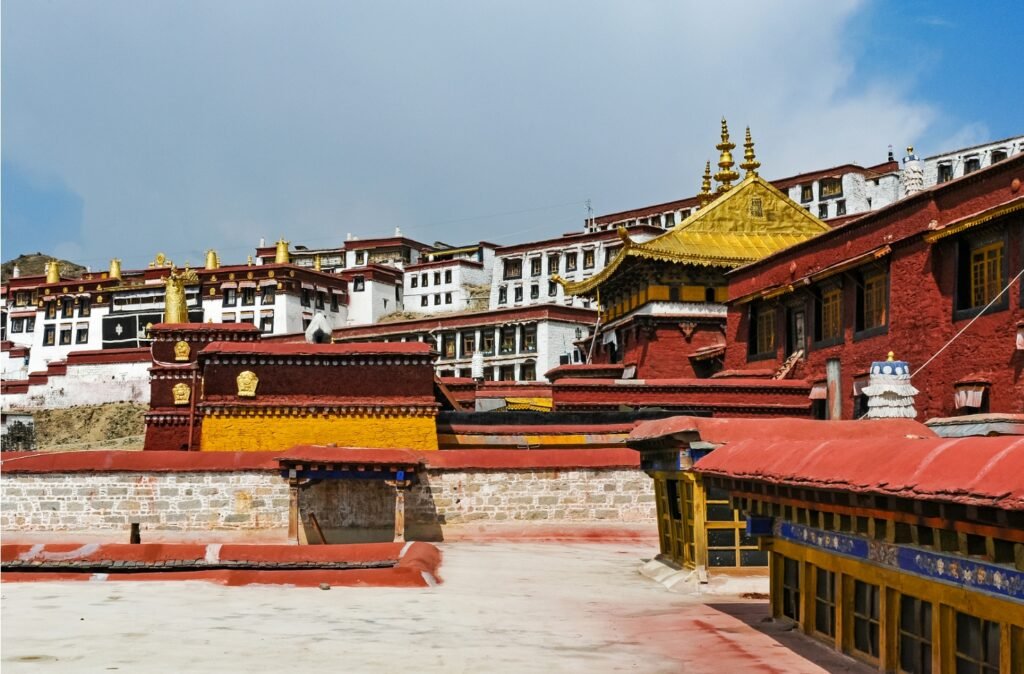
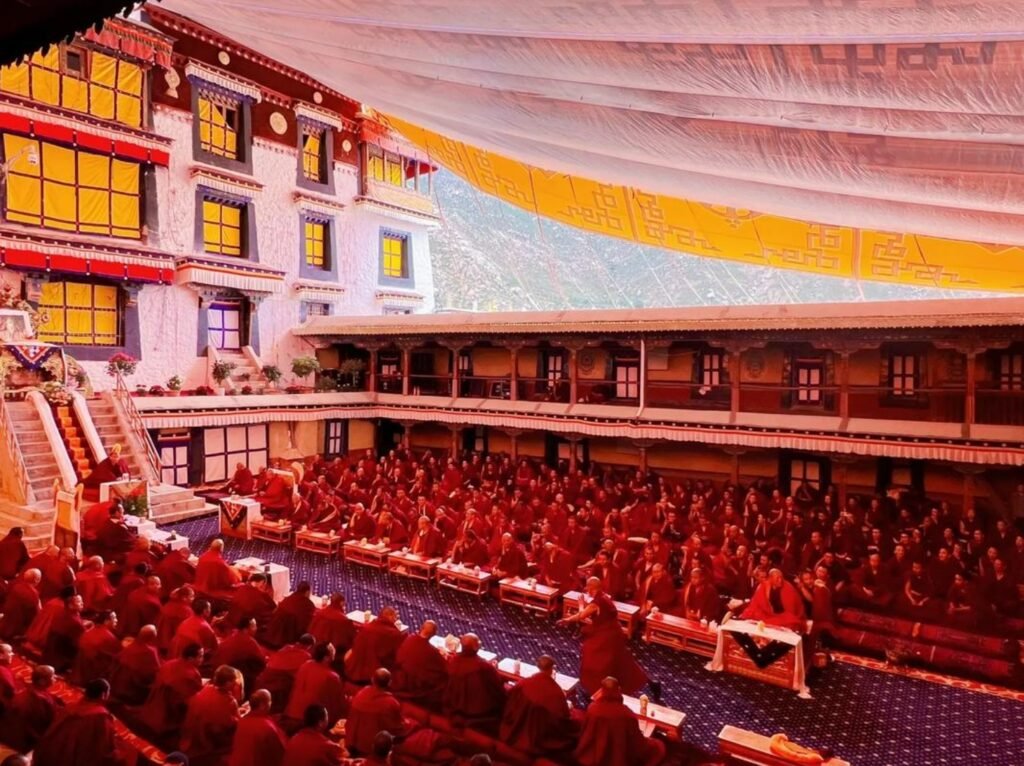
Sera Monastery
While Sera Monastery may not be as grand and colorful as Drepung Monastery, it is renowned for its famous debate sessions. These debates take place in the debate courtyard located at the northernmost part of the monastery, and it’s wise to arrive early, as many people come to watch.
Many of the halls in Sera Monastery house older murals, so it’s a good idea to bring a flashlight or headlamp for better visibility. Additionally, the sky burial platform in Lhasa is situated on the mountain behind Sera Monastery. However, the path to the sky burial site is very challenging, and out of respect for local customs, the Tibetan government does not allow travelers to observe this practice.
Sera Bengqing
The “Sera Bengqing” is a unique ritual at Sera Monastery that involves the consecration of the vajra, a symbol of power and protection. This tradition has been ongoing for hundreds of years. Each year, on the 27th day of the 12th month of the Tibetan calendar, the “law enforcer” from the Jeba Zachang rides a fast horse to deliver the vajra to the Potala Palace. After it is consecrated by the Dalai Lama, it is swiftly returned to Sera Monastery. At this time, the Khenpo of the Jeba Zachang ascends the seat, holding the vajra, and bestows blessings by tapping the heads of all the monks and the visiting devotees, symbolizing the protection of the Buddha and protective deities.
On this day, tens of thousands of devotees gather to receive blessings, creating a truly spectacular scene.
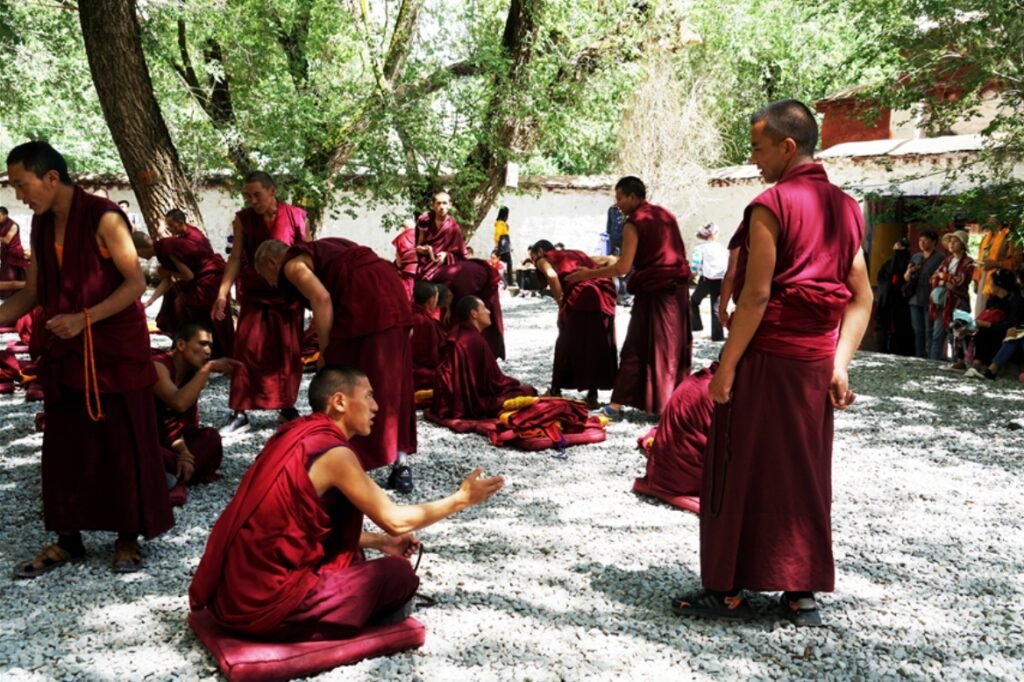
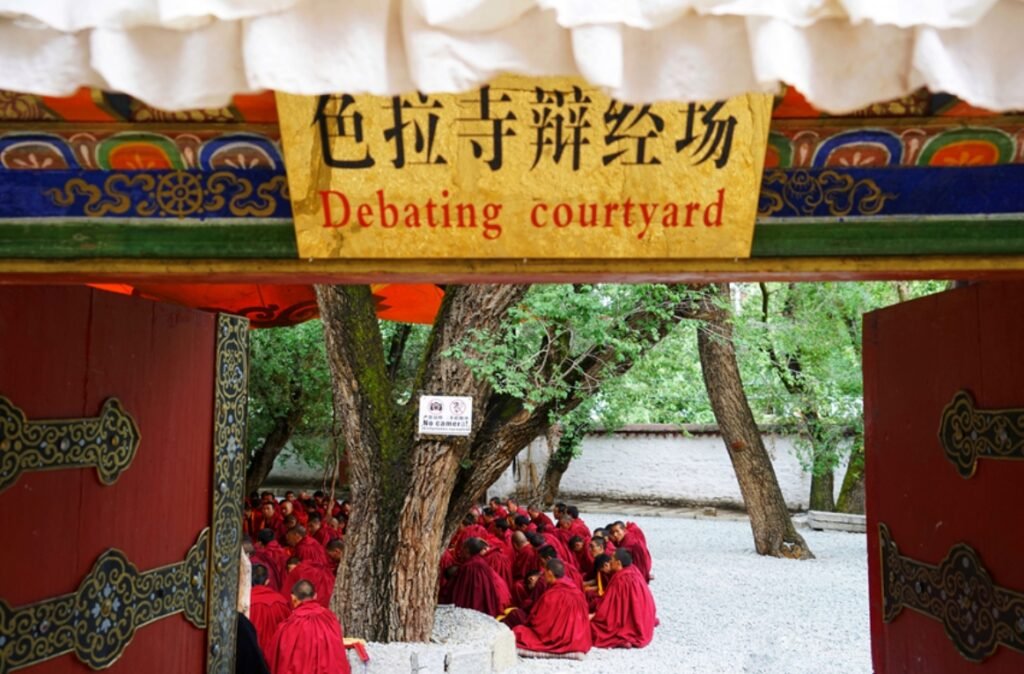
Namtso Lake
Altitude: 4,735 meters
Namtso Lake is the largest lake in Tibet and holds the title of the highest saline lake in the world. It’s considered a sacred place by pilgrims. According to legend, Namtso is the daughter of the god Indra and the wife of the Nyenchen Tanglha Mountain, making it a must-visit spiritual site for devout believers throughout history.
The lake features five islands that rise dramatically from the vast blue waters, which are believed by Buddhists to represent the Five Buddhas. Those who visit this holy lake to worship and pay their respects do so with deep reverence.
It’s said that during the Year of the Sheep in the Tibetan calendar, deities and bodhisattvas gather at Namtso to hold grand ceremonies. Just one circumambulation around the lake while chanting prayers is said to be worth 100,000 regular circumambulations. Therefore, around April 15th (the Buddha’s auspicious day), countless devotees flock to Namtso for this special pilgrimage, creating an extraordinary scene.
Location: Dangxiong County, Lhasa
Transportation: It’s recommended to hire a car or drive there yourself. If you opt for public transportation, you’ll first need to go to Dangxiong County and then rent a vehicle to reach Namtso, which can be quite inconvenient and time-consuming.
Estimated Time Needed: 1-2 days
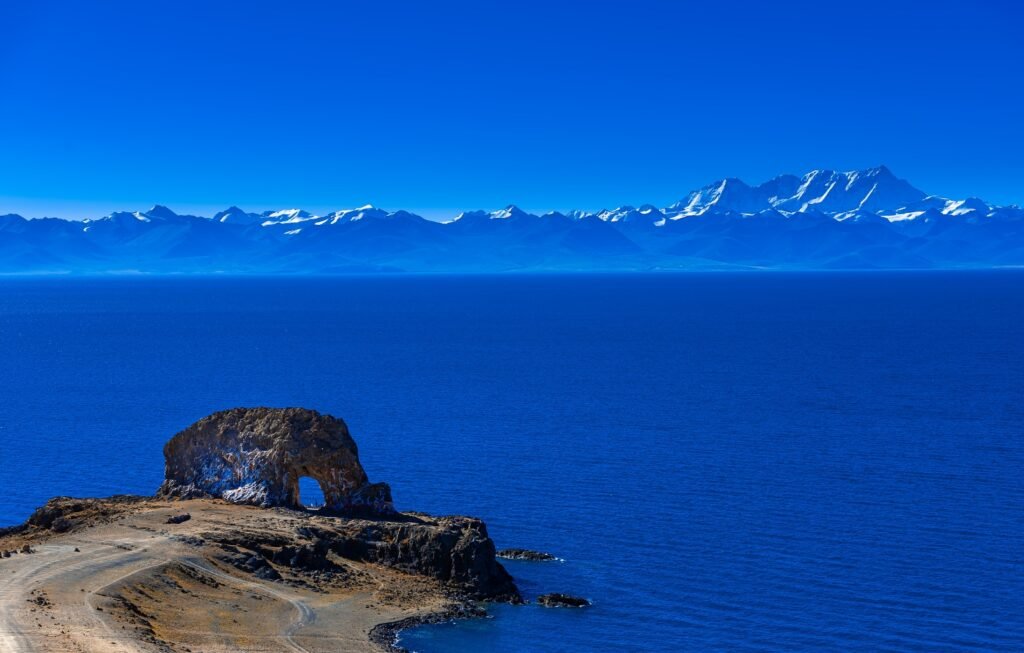
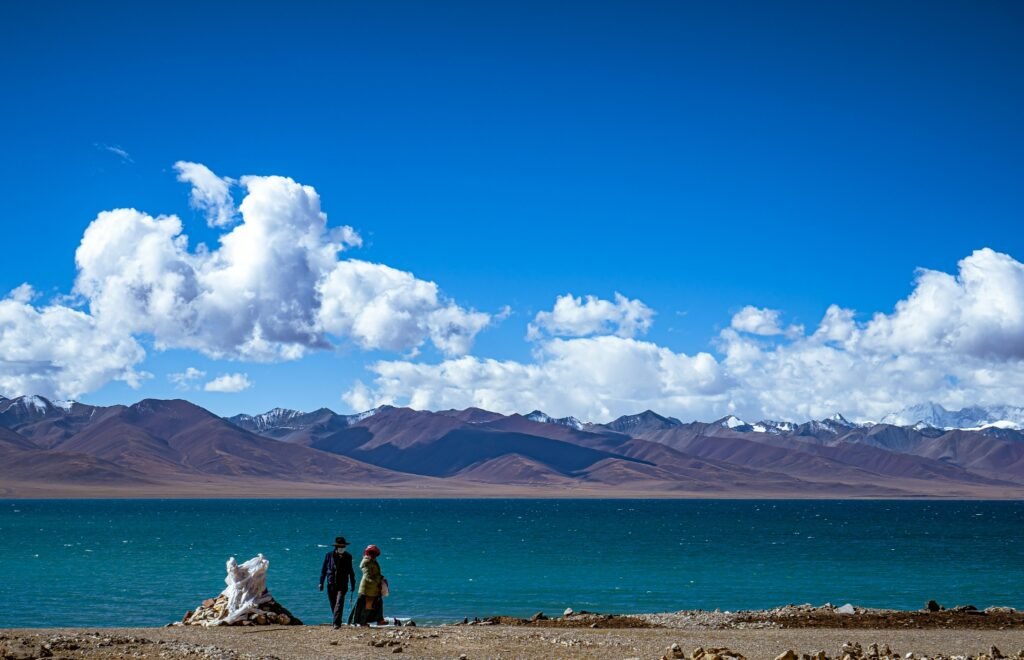
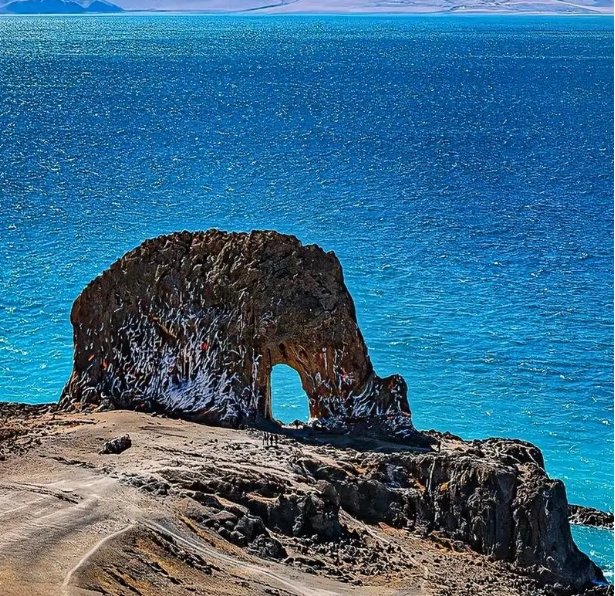
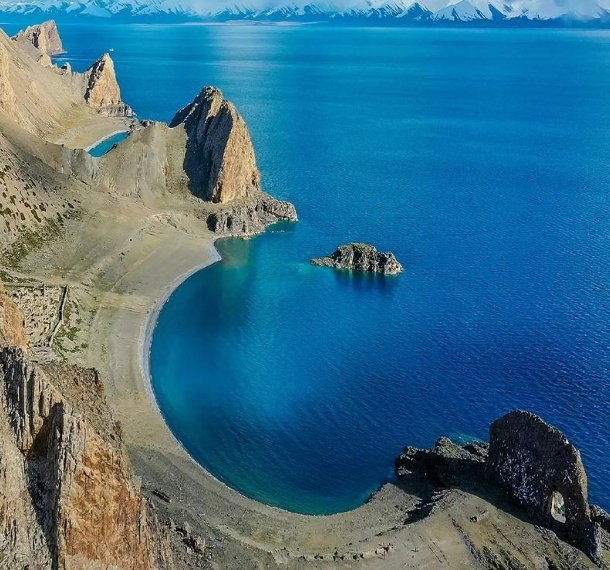
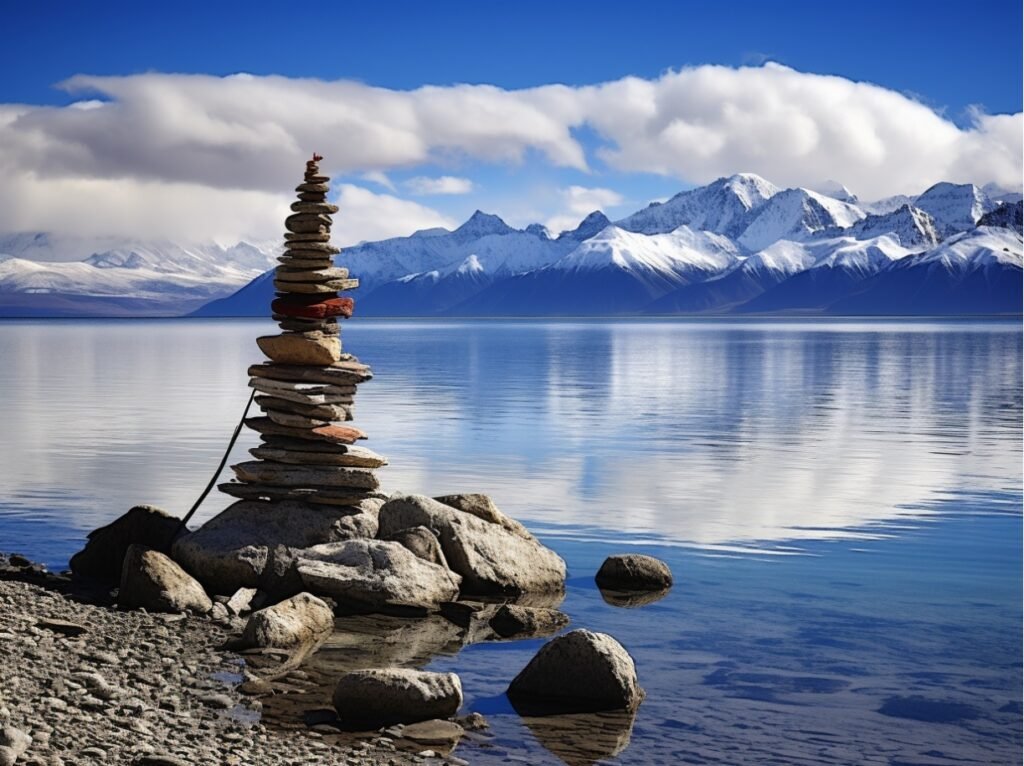
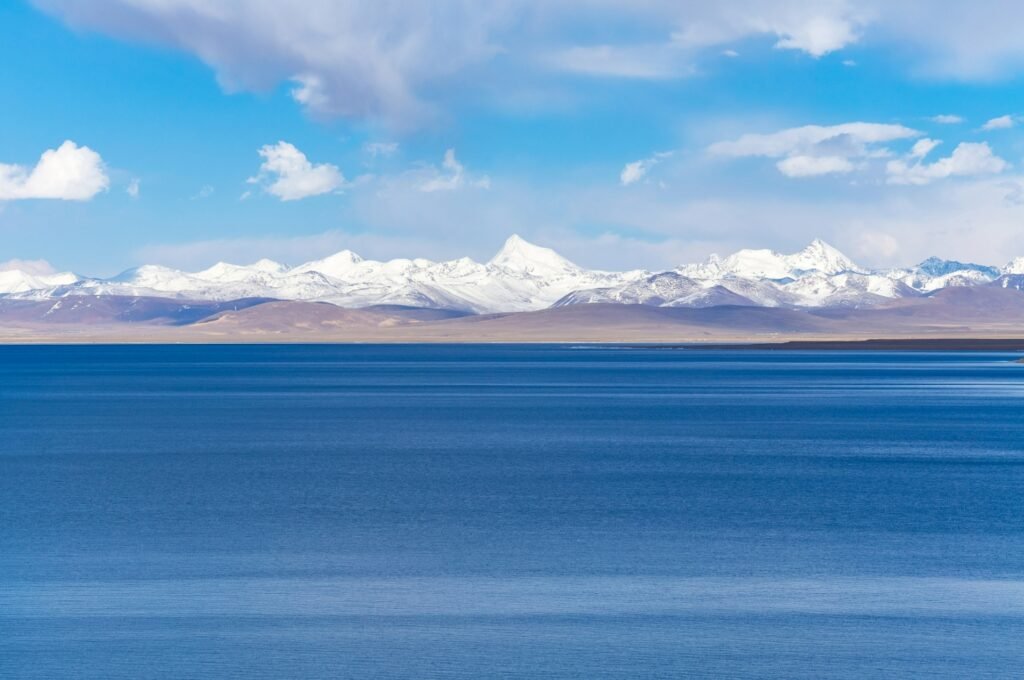
Accommodations in Lhasa
Lhasa offers a wide range of accommodation options, making it easy for travelers to find a place that suits their needs. From budget to luxury, there are hotels, inns, and guesthouses scattered throughout the city, providing plenty of choices for every budget. You can find affordable options starting from around 50 RMB per night, while high-end accommodations can go up to several thousand RMB.
It’s important to note that the star rating system in Tibet differs from that in mainland China; typically, you should consider one less star when comparing. Many hotels in Lhasa feature unique Tibetan decor, providing a culturally immersive experience during your stay.
For backpackers and self-guided travelers, Lhasa has numerous youth hostels. Staying in a hostel is often a great way to meet like-minded travelers and form groups for excursions. Some popular hostels include Pingcuo, Dongcuo, Jiri, Yabin Hotel, Balangxue, Xiangbala, and Xueyu. Most of these are located along Beijing East Road, within a 1 km radius of the old city, making it easy to walk to significant sites like Jokhang Temple and the Potala Palace.
Additionally, there’s a neighborhood of family-run guesthouses on Xianzi Island, located by the Lhasa River. Although it’s a bit farther from the old city, these accommodations often offer single and shared rooms in homes that retain a strong Tibetan character, making them suitable for longer stays.
In summary, whether you’re looking for a budget-friendly hostel or a more comfortable hotel, Lhasa has plenty of options to ensure you have a pleasant stay while exploring the heart of Tibetan culture.
Food Guide:
Lhasa’s dining scene is vibrant, offering a variety of flavors from different regions. Restaurants in Lhasa mainly serve Tibetan cuisine, Sichuan dishes, and Western fare.
For breakfast, you can fill your stomach for just 5 yuan at a local Sichuan-style eatery. Come lunchtime, you might want to head to a Tibetan restaurant to enjoy some tsampa (roasted barley flour) and sip on some butter tea.
In the evening, you can indulge in international dishes. Most Western restaurants are located along Beijing Road, where many travelers stay, and almost all hotels have their own dining options featuring Western cuisine. However, since many chefs hail from Nepal or India, the flavors can vary quite a bit!
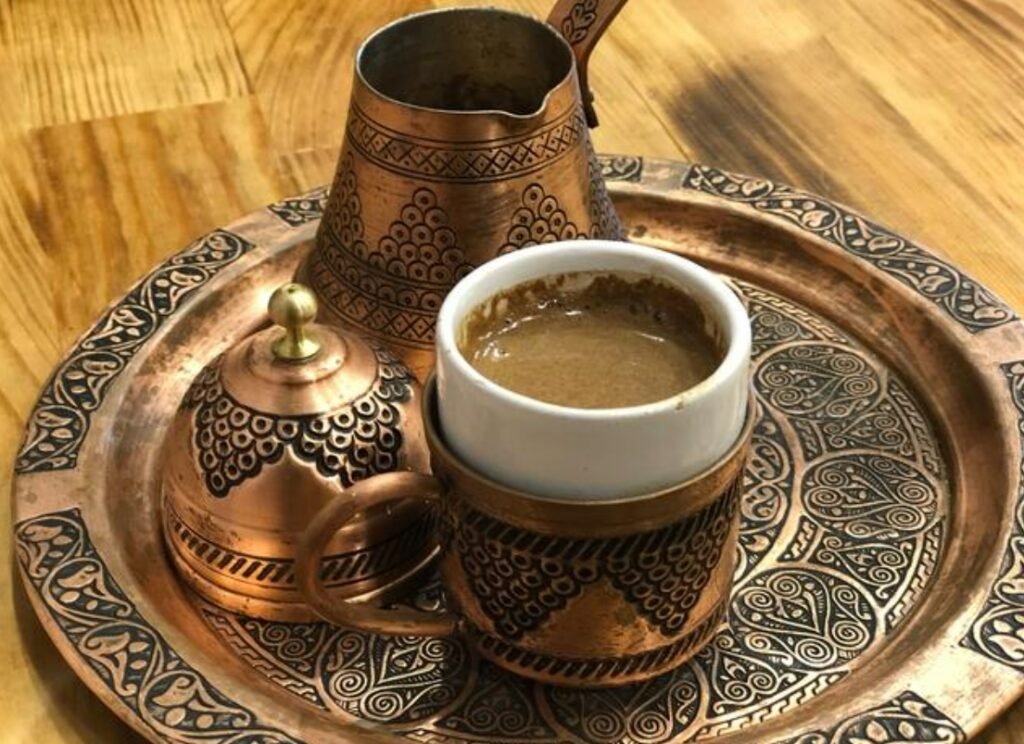
Butter Tea
Butter tea is a staple beverage among the Tibetan people. If you’re open to it, you should definitely drink as much butter tea as you can while in Tibet. It’s one of the best sources of nutrition and calories, easy to digest, and perfect for quenching thirst and combating hunger. It can even help alleviate cold symptoms and ease discomfort for those new to high altitudes.
Tibetans are known for their hospitality, and it’s customary for them to offer butter tea to guests. If you’re offered a cup, it’s considered rude to decline, so be sure to accept it graciously!

Sweet Tea
Lhasa sweet tea is made from brewed black tea mixed with milk (or milk powder) and sugar, resulting in a deliciously sweet and rich beverage. A cup typically costs about 70 cents, and you can leave some change on the table; the server will automatically refill your cup and take the money once you’re done.
While sweet tea is tasty, be cautious not to overindulge, as drinking too much can lead to a lot of heat in your body!
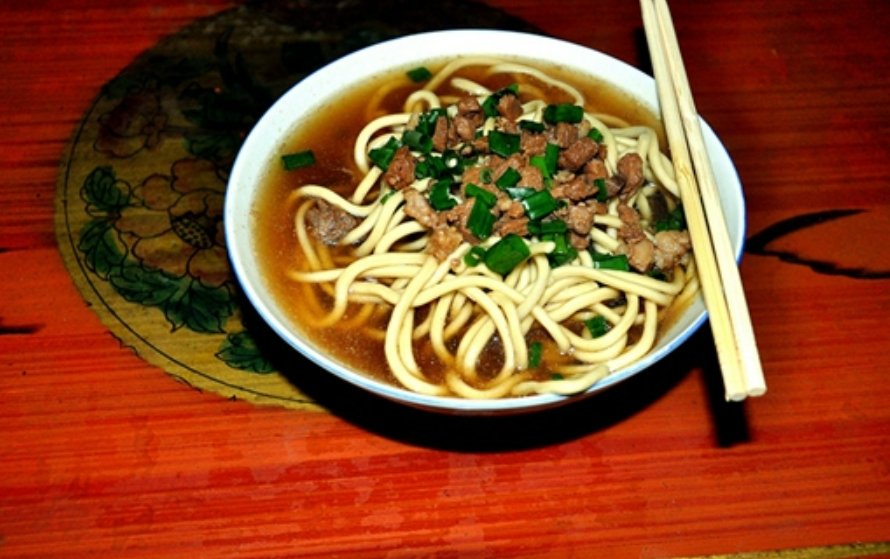
Tibetan Noodles
Tibetan noodles are somewhat similar to the hand-pulled noodles found in Northwest China, but they have their own unique style. The noodles are made by pressing the dough and then boiling it until cooked, after which they are dried. When you’re ready to eat, simply add the noodles to a steaming bowl of beef broth.
The real treat with Tibetan noodles is the soup itself. It’s a light, flavorful broth seasoned with just a touch of salt and garnished with green onions, making it a delicious and rare delight. Each sip is warm and aromatic, leaving you craving more!
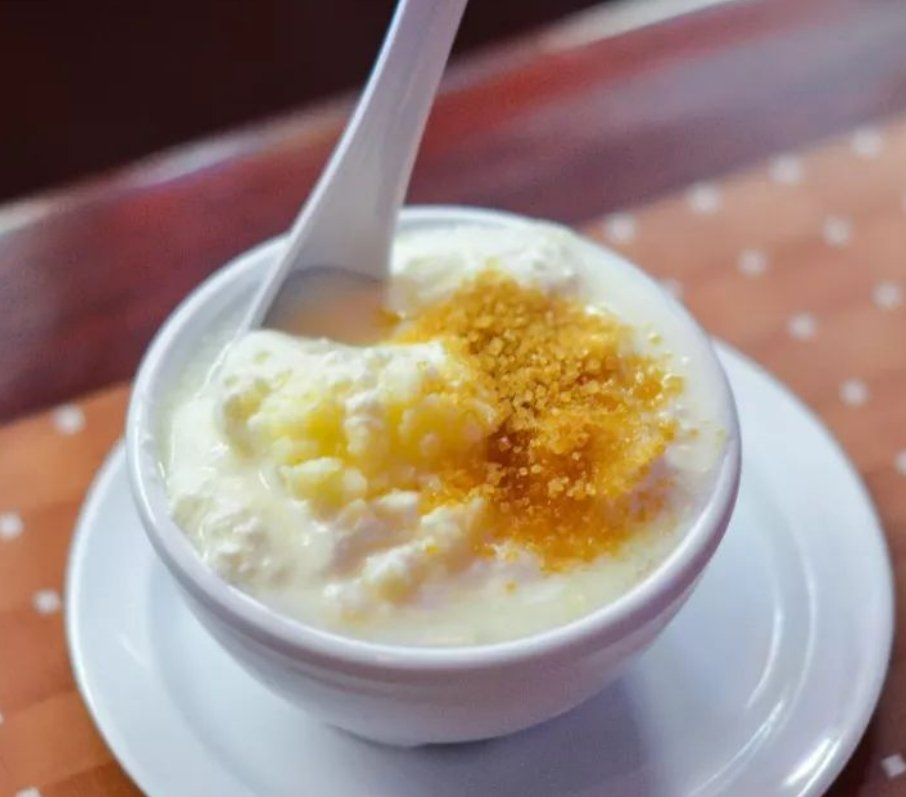
Tibetan Yogurt
Tibetan yogurt comes in two varieties. The first is called “Dazhuo,” made from milk that has had the butter extracted. The second type is made from whole milk that hasn’t been processed for butter, known in Tibetan as “Ezhua.”
Both types are rich and creamy, offering a delightful taste of traditional Tibetan flavors. Enjoying them is a must when you’re in the region!
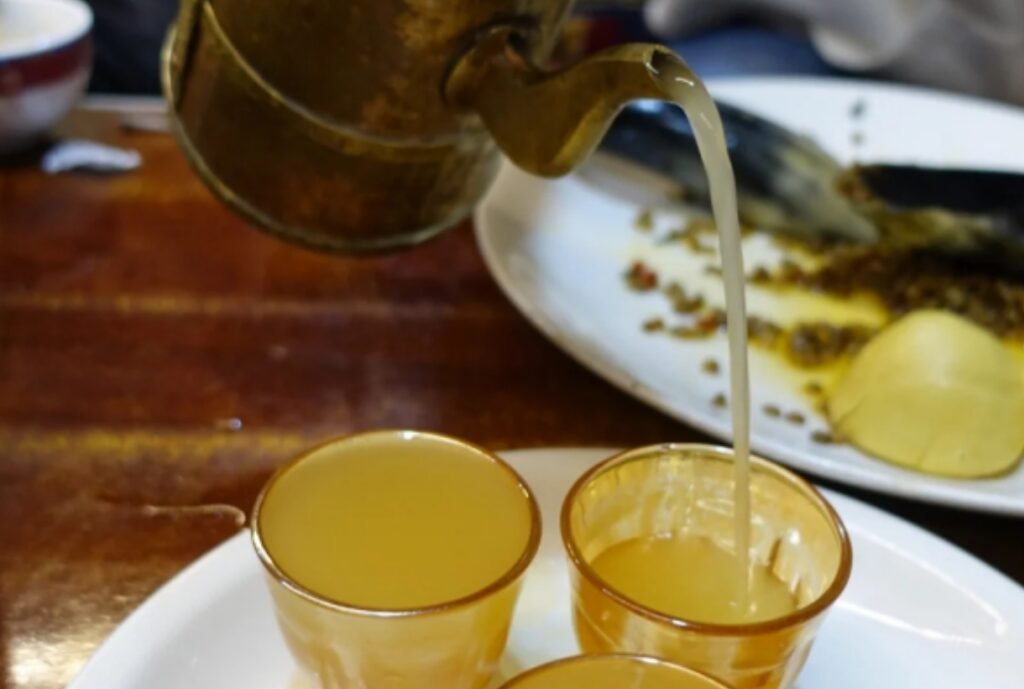
Barley Wine
Barley wine is made from highland barley and has a sweet and tangy flavor with a low alcohol content, similar to wine. It’s a beloved beverage among Tibetans of all ages and is a staple during festivals and celebrations.
When drinking barley wine, there’s a special custom called “three sips and a refill.” First, you take a sip, then refill the cup. Next, you take another sip, refill again, and for the third sip, you down the entire cup in one go. At most gatherings, the hosts often sing traditional drinking songs as they toast. Enjoying barley wine is not just about the drink; it’s also about the joy of sharing and celebrating together!
Recommended Itinerary:
Lhasa is typically the starting point for many travelers exploring Tibet, especially for those visiting for the first time. Here’s a suggested itinerary for exploring Lhasa.
Lhasa Leisure Two-Day Tour
Spend two days visiting the main attractions in and around Lhasa, including the majestic Potala Palace, the sacred Jokhang Temple, the bustling Barkhor Street, and the beautiful Tibetan gardens at Norbulingka.
Itinerary Design
Day 1: Norbulingka – Tibet Museum – Sera Monastery
Day 2: Jokhang Temple – Barkhor Street – Potala Palace – Zongjiao Lukang Park – Potala Palace Square
Detailed Itinerary
Day 1:
- If you haven’t booked your Potala Palace tickets online, head to the west gate of the palace early in the morning to queue up for reservations (it’s recommended to book an afternoon time slot). After securing your reservation, grab a meal nearby to refuel.
- Next, visit Norbulingka, the summer residence of the Dalai Lamas. After your tour, head over to the Tibet Museum to learn about the history and culture of Tibet; renting an audio guide is advisable.
- After exploring the museum, enjoy lunch, then proceed to Sera Monastery to watch the famous debate sessions. Debates usually start around 3 PM and last for about two hours, so feel free to arrive at any time to catch a portion of it. After your visit to Sera, take some time to relax, or if you have the energy, stroll around Lhasa.
Day 2:
- Start your day at Jokhang Temple, where you can witness the impressive sight of locals carrying butter lamps and offering butter to the temple. Exploring Jokhang takes about an hour.
- Once you’re done, take a leisurely walk around Barkhor Street and grab lunch nearby.
- Afterward, head to Potala Palace for your tour. Once you’ve finished, visit Zongjiao Lukang Park to enjoy the reflection of Potala Palace in the water.
- After exiting the park, find a spot for dinner in the area west of Potala Palace. Post-dinner, take a leisurely walk around Potala Palace Square to admire the stunning night view of the palace.
This itinerary gives you a great balance of sightseeing, cultural experiences, and relaxation, ensuring you make the most of your time in Lhasa!


